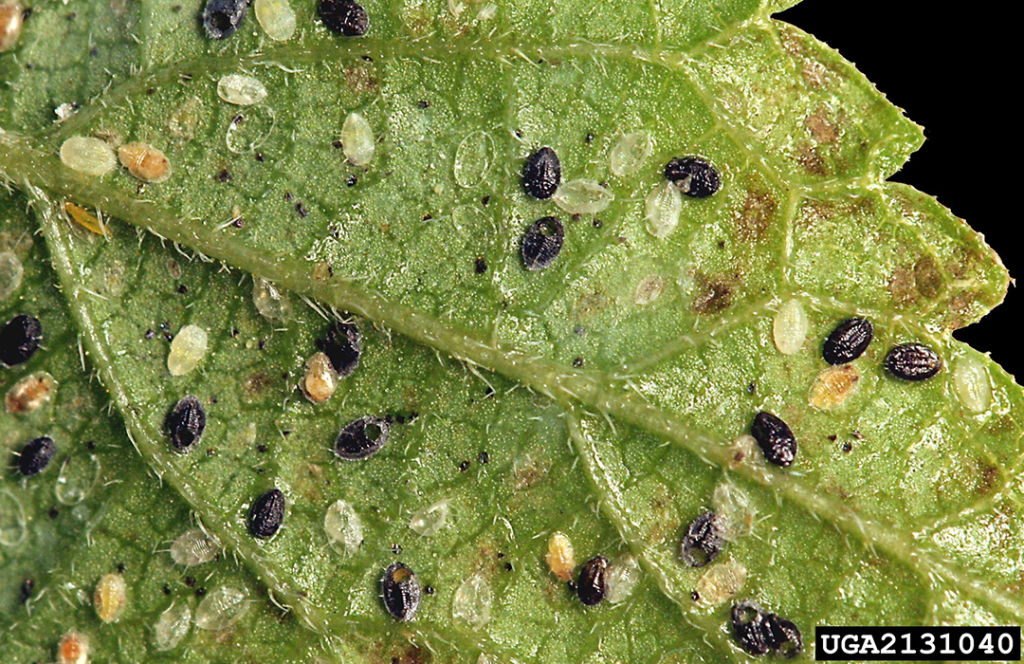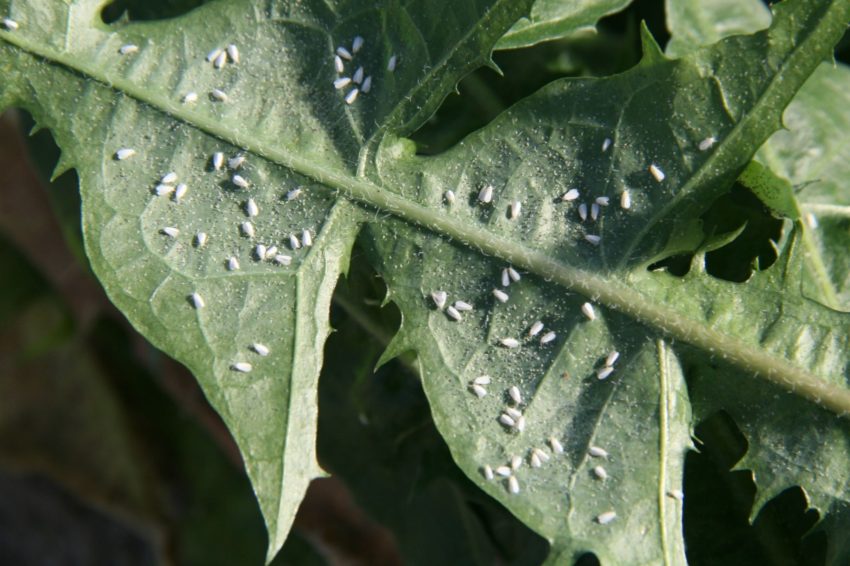Share this post
One of the most frustrating ordeals when growing a hydroponic garden is dealing with a pest infestation. The most common pest you may have to face is the whitefly, which is a small winged insect that is white or yellowish in color. These insects resemble tiny moths or gnats, are soft-bodied, and are closely related to aphids. But the major question is, are whiteflies a bigger problem in hydroponic gardens compared to soil-grown plants?
If you want to protect your hydroponic garden from pests and disease, we strongly recommend following our guide below. We’ve provided information on why whiteflies thrive in hydroponic systems and ways you can kill them and prevent further infestations.
Why Whiteflies Thrive in Hydroponic Systems
Whiteflies can thrive more in a hydroponic garden because the environment is a constant source of nutrient-rich water. Since most hydroponic gardens are grown indoors, the whiteflies don’t have any natural soil-based predators that would control their growing population.
The problem with whiteflies is that they can lay hundreds of eggs that hatch within 5 to 10 days, so it doesn’t take long for an infestation to take over your hydroponic system. Once hatched, the larva attaches to the leaves of your plants and feeds on their sap while leaving behind a sticky residue called honeydew. The honeydew is harmful to hydroponic plants because it can lead to the growth of black mold.
Additionally, whiteflies can transmit a variety of plant viruses, such as begomovirus, crinivirus, and ipomovirus, that can spread throughout your garden and cause yellowing leaves, stunted growth, and death to your crops.
Common Control Challenges Growers Face
One of the most common problems hydroponic growers face is improper nutrient management, which can cause suboptimal plant conditions. Sometimes these conditions can increase the risk of hydroponic pests like whiteflies. When your plants are deprived of nutrients, they can become stressed, and as a result, they’re prone to predatory pests.
However, nutrient management is extremely complex in indoor hydroponics. Some nutrients can deter pests, whereas other types of nutrient solutions can attract them. For instance, if your hydroponic plants don’t have enough calcium, it can create physiological disorders that can attract pests. On the other hand, increasing potassium can accelerate plant growth and help prevent the spread of diseases.
Comparing Whitefly Infestations in Soil and Hydroponic Systems
When you compare whiteflies in hydroponics vs soil, the dynamics of infestation may differ between the two systems.
In a hydroponic garden, whitefly infestations can be worse compared to soil-based crops. This is because in a hydroponic setup, plants are in a controlled, warm, and humid environment, which is ideal for whiteflies to reproduce and spread at a rapid rate.
On the other hand, plants growing in soil are more spaced out, and there are natural predators within this environment that feed on whiteflies. As a result, infestations are more controlled.
That’s why it’s important for indoor hydroponic growers to monitor their systems consistently and use the right forms of pest control. You can eliminate whiteflies using Protection Plus, an eco-friendly foliar spray with a high kill rate on first application. It works by breaking the whitefly lifecycle, targeting emerging populations and ensuring all life stages are controlled when applied weekly.
How to Tell if You Have a Whitefly Infestation

Alt Text: Black and yellow whitefly eggs sticking to the bottom of a leaf. Image by David Cappaert.
There are common hydroponic whitefly infestation signs that you must not ignore. You’ll know something is wrong with your hydroponic indoor plants if you notice the following:
- Wilting leaves
- Yellowing
- Leaf drop
- Traces of honeydew
You may not be able to detect a whitefly infestation in its early stages because they blend with plant leaves. As a result, it can be difficult to see these pesky flies, and you’ll probably only notice them when they’re fully grown.
These pests live on the underside of leaves, mostly around the veins of the plant. Look out for brown or yellow eggs. Whitefly nymphs or larvae will look like tiny, oval-shaped dots on your leaves. The nymphs don’t move around that much when they hatch, so at this stage, it may be easier dealing with pests like these.
5 Ways to Save Your Hydroponic Garden from Pesky Whiteflies

Alt Text: Lettuce growing in horizontal hydroponic systems with a transparent roof and pipes with an irrigation system. Image by David Ammon.
Whiteflies can cause serious plant diseases that can potentially kill your crops. The good news is that there are many ways you can control pests in hydroponic systems. Below are 5 easy ways you can prevent predatory insects like whiteflies from destroying your indoor garden.
- Monitor Your Water Quality
Stress from poor-quality water can weaken your plants and even reduce their natural defence against pests. You will have healthier plants and excellent yields if you always monitor your water quality when growing food or flowers in a hydroponic system. Get an EC and pH meter so you can test the quality and pH level of your water.
- Don’t Overcrowd Your Hydroponic System
Overcrowding plants in a hydroponic system can increase the risk of a whitefly outbreak. This is because whiteflies thrive in dense planting because of the following:
- Leaves are too close together: When plants are placed densely in one spot, it makes it easier for whiteflies to transfer from one leaf to another.
- No airflow: If you don’t have proper airflow when growing plants indoors, it can create a humid environment that whiteflies favor.
- Shaded underside of leaves: This provides protected areas for whiteflies and other pests to lay eggs and go unnoticed.
Give your hydroponic plants room to grow so there is always proper airflow and leaves don’t overlap. You can also use fans or adjust your airflow to control humidity levels.
- Keep Your Hydroponic System Clean
Another way whiteflies can thrive in a hydroponic environment is through cluttered gardens. To maintain your garden, you must remove:
- Dead leaves
- Plant debris
- Algae build up
- Damaged plants
These situations create hiding spots for common hydroponic pests like whiteflies. You should also sterilize your equipment regularly and disinfect pumps, trays, or channels where eggs can linger. Keeping your indoor hydroponic garden clean can also improve plant health and prevent root rot.
You might also be interested in: 7 Steps to Clean Your Hydroponic System
- Use the Right Solutions for Whiteflies
Using harmful substances in your garden can damage your plants, so it’s important to have the right products on hand when growing in a hydroponic environment. Protection Plus is your first line of defense as it safely controls whitefly populations without harming your healthy plants.
While some growers may use alternative methods like neem oil, many avoid it because it can leave a sticky residue and may even damage plants. Protection Plus is a water-based whitefly spray that can kill 99% of insects when used regularly.
- Place Sticky Traps To Catch Whiteflies
Another line of defense is using sticky traps if you’re growing crops without soil. Common indoor pests like whiteflies are attracted to yellow sticky traps because they resemble new plant growth. The pests will then stick to the yellow card, which will prevent them from attacking your plants and causing problems like powdery mildew disease.
Final Thoughts – Control Fungus, Whiteflies, and More
There are beneficial insects like ladybugs that naturally prey on whiteflies. In traditional soil-based gardens, these insects play a major role in pest control. In hydroponic indoor environments, however, beneficial insects are not always naturally present. While growers can purchase and introduce them, the cost is often high.

That’s why Protection Plus is such a beneficial product for hydroponic growers because it’s an eco-friendly solution that leaves no residue when correctly applied, so your plants can thrive without build-up. As a product with a contact-based mode of action, it works on a wide range of insects like whiteflies that spread fungus and disease.
For best results, apply as a foliar spray or media drench following proper hydration and dosage guidelines, and make sure all affected surfaces are thoroughly covered. Note that multiple applications may be needed to reach eggs and newly hatched pests. The Protection Plus solution has high, first application whitefly kill rates and gives you complete, safe, and effective pest control. Protect your crops and get Protection Plus today, to keep your hydroponic garden healthy and thriving.
Blog post image credit: https://extension.unh.edu/resource/greenhouse-whitefly-fact-sheet

